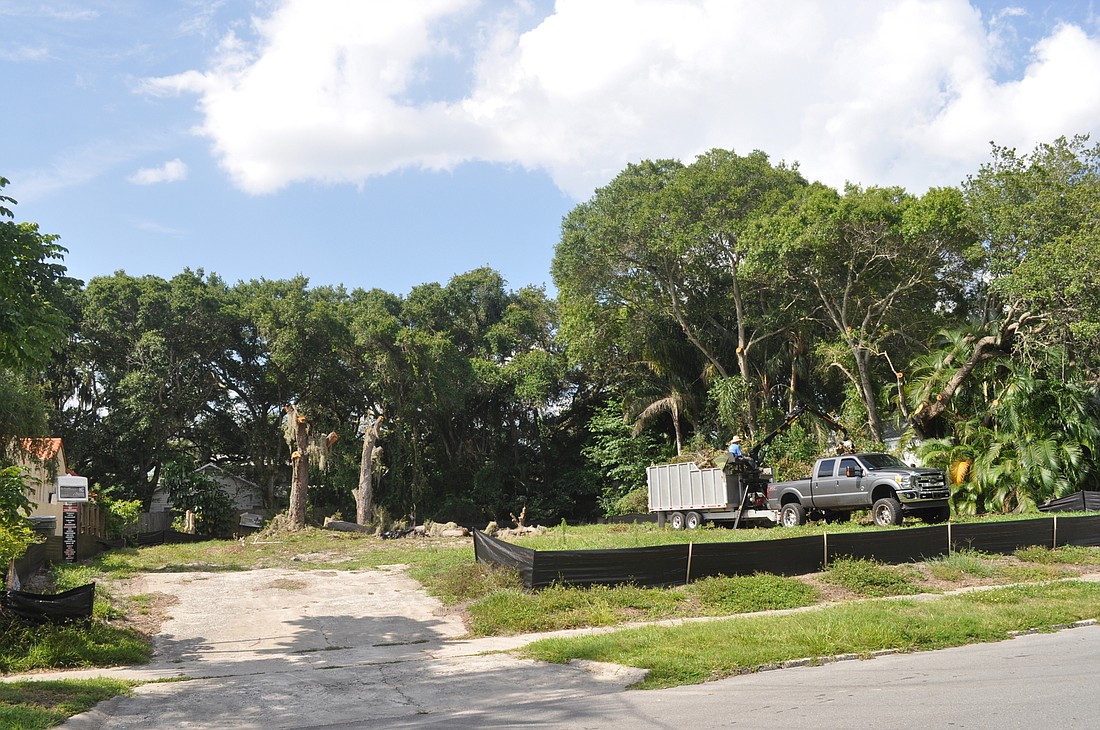- December 15, 2025
-
-
Loading

Loading

After 17 months of meetings, the city’s Tree Advisory Committee believed it had developed a list of 25 recommendations that could improve Sarasota’s tree protection regulations — rules that had drawn the ire of neighborhood leaders, environmental advocates, property owners and developers alike.
The City Commission told the committee’s chairman Monday it thought the proposed changes could use a little more refinement.
The commission directed the committee to meet again to consider potential changes based on input shared at Monday’s meeting. Still, commissioners and other city officials were generally supportive of the committee’s work. Staff expressed hope the recommendations would lead to a more balanced, sensible tree ordinance and bring some resolution to an issue of public interest.
“We realize this isn’t a perfect document, but I think it does contain excellent steps forward,” said Tim Litchet, the city’s director of development services.
The committee’s report identified three major themes in the feedback it received regarding tree regulations: a lack of flexibility, a need to plant the right trees in the right locations and a desire to create a long-term urban forestry plan for the city.
The recommendations sought to respond to that input and more. The advisory board determined the city should give homeowners more authority to landscape their own properties as long as large, meaningful trees are not removed and appropriate mitigation is provided — either by replanting trees on-site or by paying fees into a city fund.
The board recommended expanding the number of undesirable tree species that do not require mitigation. It also suggested changing the standards for replacing removed trees. Currently, the removal of a large canopy tree could require a property owner to install trees with trunks 5 inches or 7 inches in diameter at breast height.
The city discovered most nurseries in the area did not have trees that large, which makes it difficult for homeowners to comply with the rule. As a result, the committee recommended lowering the minimum replacement tree size to 3 inches in trunk diameter. Property owners would still have to install the same ratio of replaced trees to mitigation trees as the ordinance currently requires.
Elsewhere, the recommendations seek to enhance existing tree protections. The advisory board suggested expanding the definition of a “grand tree” to include more species. It proposed protecting all mitigation trees regardless of size.
Litchet said the most important long-term recommendation was to create an urban forestry program with a strategic plan within two years. Litchet and committee Chairman Michael Halflants said taking a more holistic look at which trees are appropriate for which sections of the city could allow the city to be proactive in tree management.
City Arborist Mark Miller said he believed the urban forestry program would help streamline the city’s management of trees. Right now, responsibilities are spread across departments, which causes communication issues and frustration for residents.
“I think having us all in the same department would just increase cooperation, communication and efficiency,” he said.
Commissioner Jen Ahearn-Koch had some questions about some of the recommendations the committee made, but she said the proposed urban forestry program gave her comfort the city would continue to try to refine its tree policies even if the commission adopted the proposed ordinance changes.
“That will be the document that makes sure we have this overall coverage, that it’s balanced and done in a way that’s thought out and researched,” Ahearn-Koch said.
Commissioner Shelli Freeland Eddie encouraged the committee to think about more clearly in defining some of its regulations, including one provision that would allow a property owner to remove a tree if the city arborist determined the site was overly dense with trees. She also suggested the city could lessen its tree-related standards on affordable housing projects.
The commission told the committee to consider any other feedback it hears regarding the recommendations at its next meeting before finalizing a report. The commission agreed it would likely need to schedule a future special meeting before formally adopting any changes to the tree ordinance.